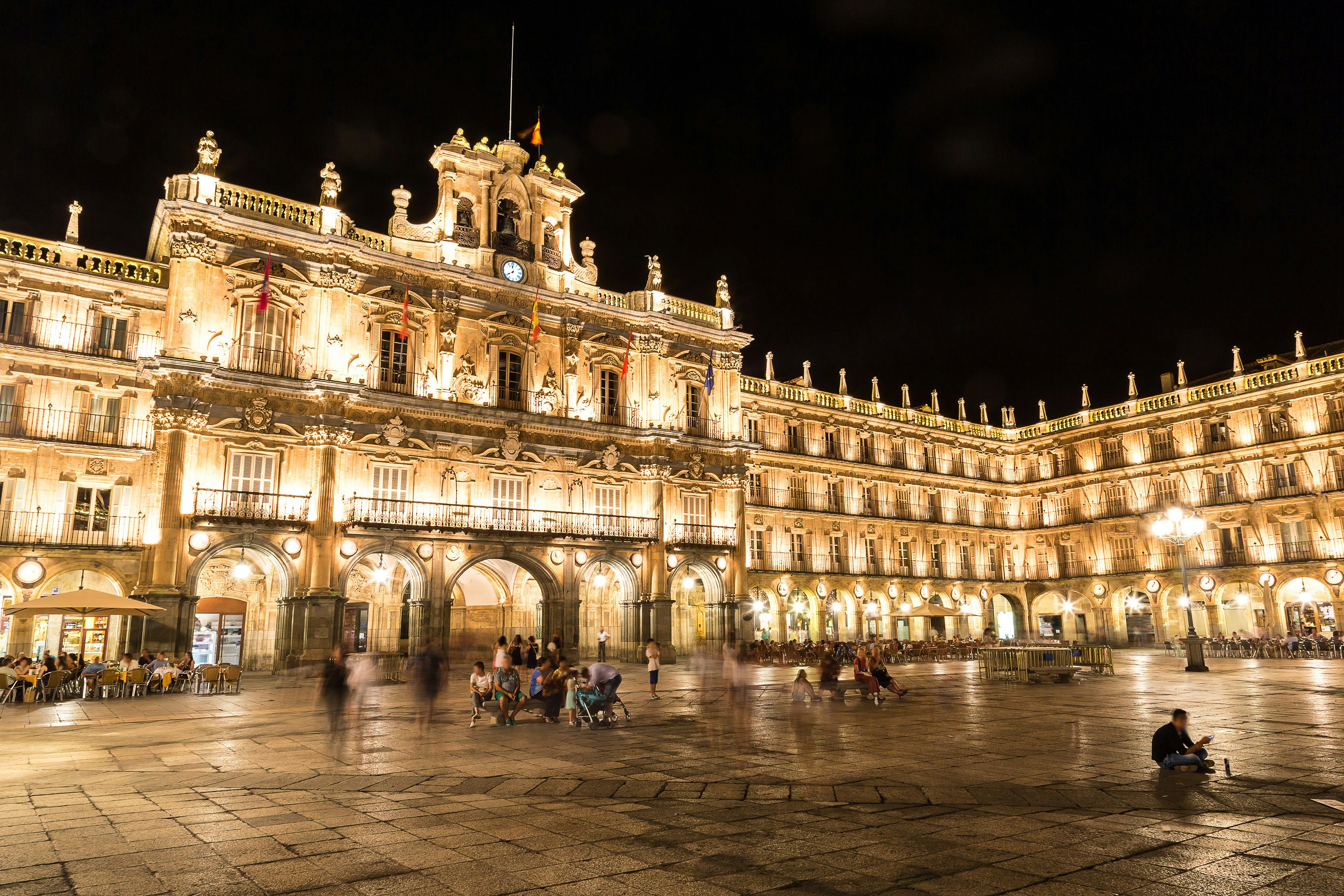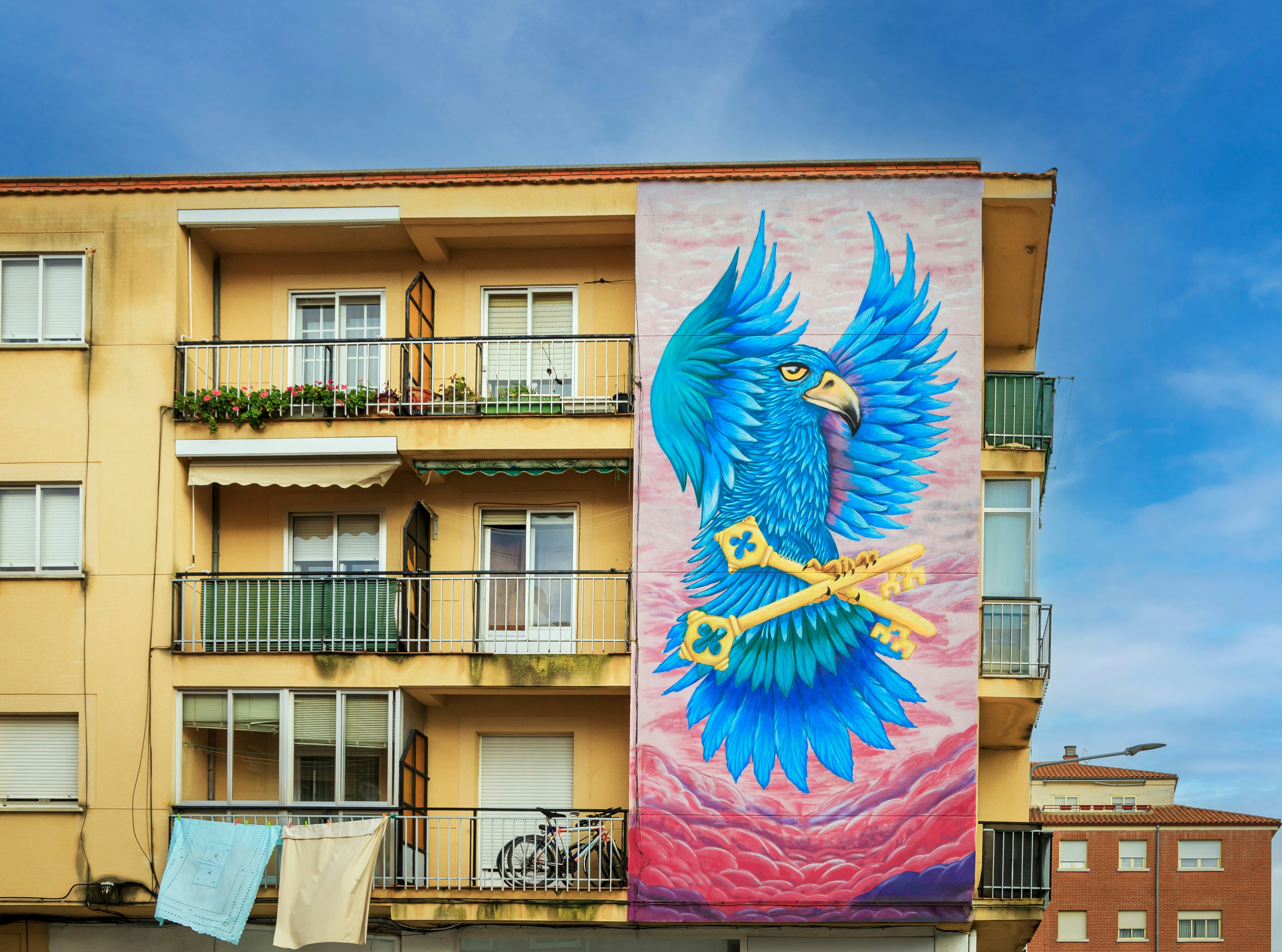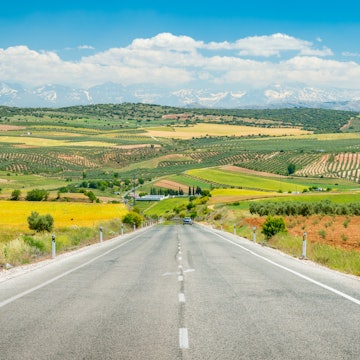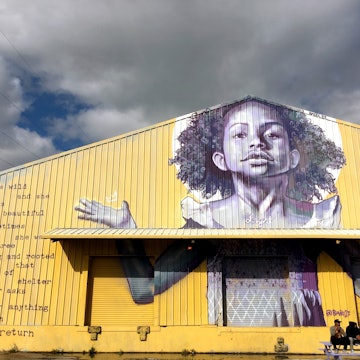
The 11 best things to do in Salamanca, Spain



View over Salamanca. Matt Munro/Lonely Planet
Most of Castilla y León’s cities feature remarkable historical centers, but few, even among their staunchest partisans, would deny that mighty Salamanca is the jewel in the crown.
There are few places where such a wealth of architectural treasures have been packed into such a small area. You can get a superficial glimpse of the main sights – Plaza Mayor, the university, the cathedrals – in a couple of hours, but Salamanca repays those who make more leisurely explorations into her labyrinth of lanes and alleys.
The nightlife will tempt you, but plan to spend at least one evening exploring shadowy plazas where legends and myths seem to come alive even today. Yet time has never stood still in one of the world’s most venerable university towns, and the vibrant open-air “urban gallery” of Barrio del Oeste reveals an unexpectedly edgy side to this queen among cities.

1. Tour Salamanca's historic university
Guided tour-groups passing among this city’s historical riches invariably pause to admire the ornate 16th-century facade of the Universidad Civil of Salamanca. They take a few minutes out of a whistle-stop sightseeing schedule to try to spot the fabled “lucky” frog among the sculpted coats of arms, mythical beasts and gruesome skulls.
There’s nothing “lucky” about this obsession with scanning the cover of this great stone book without digesting even a part of the epic story inside. A stroll through the corridors, lecture theaters and libraries of one of the world’s great temples of academia is an insight into what made Salamanca great.
Founded in 1218, this venerable university encompasses traditions and rituals all of its own. The complex is big enough to merit an hour or two of wandering (although lecture halls are sometimes closed to the public when classes are underway). At least be sure to check out the chapel and the main library – adorned with signs threatening excommunication to anyone who borrows a book without returning it!
Local tip: For a free insight, turn your back on that frog-concealing facade and walk through a secluded gateway in the back corner of Patio de Escuelas to enter the solitude of the patio of the 600-year-old Escuela de Menores and the beautifully painted dome known as El Cielo de Salamanca. This unexpectedly peaceful little square – beyond the clicking of cameras and the jostling for selfie-space – is the ideal place to soak up some of the timeless atmosphere of old Salamanca.
2. Learn Spanish in Salamanca
Salamanca is one of the most popular places in Spain to study Spanish, and the University of Salamanca is the most respected language school.
Courses range from a 3-hour daily course over 2 weeks to a 10-week course of 5 hours daily. Courses are offered at all levels (beginner, intermediate, advanced and proficiency) and can focus on a variety of subjects. You can choose a course to suit your needs and preferences. Accommodation can also be arranged.
Planning tip: Download the multilingual Salamanca Turismo app (available online or ask at the tourism office), which features 15 excellent self-guided walks with durations of between 1 hour and half a day.

3. Be awed by Salamanca's majestic cathedrals
Salamanca’s two majestic cathedrals can get crowded, but at opening time (10am), savvy visitors who make a beeline directly for the Catedral Vieja tend to have the luxury of soaking up 900 years of history in almost complete solitude.
They wait until the first tour groups start to drift through and then take the time to backtrack to begin the tour “from the beginning” in the Catedral Nueva (dating back a mere 5 centuries!).
Planning tip: A multilingual audio-guide is available at no extra charge to lead you through the details of every one of the main works of art. The commentary – heavy on dates and artist names – is hardly thrilling raconteuring, but then again the majestic architecture that surrounds you speaks for itself.
4. Find out about Salamanca’s bullfighting traditions
La corrida (bullfighting) has been a characteristic part of Salamanca’s history since medieval times and – like it or not – it’s still a key to an understanding of traditional Spain. There’s far more to this supposed “artform” than most people imagine, and while you might not want to take in an actual performance, it can be illuminating to get an insight into the complexities of an industry that, even today, employs 200,000 people throughout the nation and attracts 25 million spectators annually.
Museo Taurino Salamanca (one street back from the Plaza Mayor) was established also to shed light on the environmental benefits of the dehesa (the woodlands where bulls are raised).

5. See the Plaza Mayor by night
Students of architecture (and this city has more than its share) delight in pointing out that what’s often described as Spain’s most perfect square is actually an “irregular quadrilateral.”
It might be 3m longer on one of its sides, but in simple terms Plaza Mayor is absolute perfection and is best enjoyed as a stage-set…with a cast of hundreds. For almost 3 centuries it has served more like the auditorium of a grand opera house than an administrative center (as well as an occasional bullring). These days you'll often find art exhibitions and craft fairs taking place here or festive markets in the weeks leading up to Christmas.
Under the shelter of the alcoves, surrounding plaza stalls are set up offering blocks of turron (a sort of honey-sweet almond delicacy) and smoldering drums of hot castañas (chestnuts). Nougat, nuts, honey, jamón serrano and regional specialities and vintages are often on display, with offerings set out for sampling.
Plaza Mayor is arguably at its most spectacular during the Easter processions, especially the Semana Santa (Holy Week) events when the square throngs with penitents and worshippers for the nocturnal processions under the eerie golden glow of the spotlights.
Concerts often take place here – even occasionally full-sized orchestras – but, even on an average evening, the show goes on as musicians and dancers “take to the stage.” You’ll often see buskers, singers, acrobats and clowns moving through the crowds of sunset-snapping visitors.
Planning tip: Book a ringside table at a restaurant and try not to arrive late. When the lights go on at dusk, you’ll know why.
6. Haunt Salamanca’s spookiest spots
There’s a certain spooky corner of Salamanca that always gives the chills. Cueva de Salamanca – not actually a cave but a creepy stairway – is all that remains of the crypt of the 14th-century San Cebrian Church. It’s said that the Devil used to teach black magic here and in return would demand the soul of one student each night. To find the Cueva look for the iron gateway on your left as you walk up Cuesta de Carvajal.
Continue up the hill beyond to the equally eerie garden known as Huerto de Calixto y Melibea. According to legend, Calixto (a spurned lover) made a contract with the Devil to put a spell on the lovely Melibea. What happened next? Well, let’s just say that these things rarely work out as planned!
Planning tip: Try to be here for sunset to enjoy trees swarming with murmurations of starlings and to hear the storks calling, their bills clattering with a sound like falling roof tiles from the church towers below.

7. Sample Salamanca tapas and grilled meats
Salamanca has an excellent range of restaurants to suit all budgets, from late night cafes to cosy tapas spots. Restaurants in and around Plaza Mayor concentrate on traditional grilled meats and tend to be more expensive, although the quality is generally high. Prices drop the further you are from the square. Pedestrian Calle de Meléndez and Rúa Mayor are home to more restaurants with outside seating.
Claiming to be Salamanca's oldest cafe (1905), Café Novelty might not be the friendliest place to stop, but its prime Plaza Mayor location is unbeatable. A popular meeting place for students in the heart of the old town, Delicatessen is another late night institution – keep going through to the patio. A perennial classic full of old-time Castilian charm, Café el Alcaraván is a cozy, comfortable and welcoming neighborhood cafe that’s open late. Manolita Café Bar is popular with students for its coffee and comfy sofas by day, and then equally popular with workers for evening drinks and tapas.
At El Bardo, the hearty stews are why this backstreet favorite is worth a visit. It’s also popular for the menú del día. It’s often standing room only at Cuzco Bodega, so arrive early. It’s popular for great wine and irresistible tapas (including succulent sliders). For value for money, Bar La Fragua’s speciality is the ever-changing cazuela del día (stew of the day). And Pincho moruno (steak skewer) and the award-winning truffled duck-egg are major crowd-pullers at the upmarket Bambú Tapas y Brasa. Reserve ahead at this one.

8. Admire the Museo de Art Nouveau y Art Decó
Utterly unlike any other Salamanca museum, this stunning collection of sculpture, paintings and art deco and art nouveau pieces inhabits a beautiful, light-filled Modernista (Catalan art nouveau) house.
There's abundant stained glass and exhibits that include Lalique glass, toys by Steiff (inventor of the teddy bear), Limoges porcelain, Fabergé watches, fabulous bronze and marble figurines, and a vast collection of 19th-century children's dolls (some strangely macabre), which kids will love.
Planning tip: There's also a cafe here, El Café de Lis, and an excellent gift shop.
9. Hit Salamanca’s chic cocktail bars
Salamanca's large student population equals lively nights. Nightlife here starts very late, with many bars not filling until after midnight, when many cafe-bars morph into dance clubs. The so-called “liter bars” on Plaza de San Juan Bautista are fun night-time hangouts, mainly for students.
It’s fortunate that there’s a terrace at The Doctor cocktail bar, because the snug interior is eternally busy, as befits a venue with such legendary cocktails. At Tio Vivo, an appealingly quirky interior features oversized spotlights and fairground horses, while the mixologists perform pure alchemy (don't overlook the pisco sour). Salamanca's most literary cocktail joint, Niebla, is dedicated to local writer Miguel Ángel Asturias – try the Niebla Classica with Flor de Caña rum. And the mixologists rustle up a magical range of classic and vanguardista cocktails to a soundtrack of cool tunes at Vintage Cocktail Bar.

10. Tour street art in Barrio del Oeste
The Barrio del Oeste neighborhood – literally the Western Quarter – has long been a favored residence for students. But in 2013, it reinvented itself as an open-air gallery, featuring some of Spain’s most spectacular street art.
On the Salamanca Turismo app you'll find a guided walk through the urban gallery in Barrio del Oeste. The app (available online or ask for a copy at the tourism office) features eight of the most spellbinding and award-winning works here, but it is obviously always a work-in-progress as brand-new murals – some three stories high – are constantly being created.
Planning tip: The circular loop (departing from Plaza Mayor) could easily be walked in an hour but there are countless masterpieces; so, if street art is your thing you could easily wander and browse here for hours.
11. Spend a day as a pilgrim
For most pilgrims on the Via de la Plata pilgrim route, the hike northward from Salamanca to the little town with the unusual name of El Cubo de la Tierra del Vino (which translates as "the bucket of the land of wine") is one of the longest legs in their 1000km journey to Santiago de Compostela (36km).
Many people attempt the Camino in separate stages (often spread out over several years) and there’s absolutely nothing to prevent you from experiencing the intensity of the pilgrim trail for just a single day. You could walk any section, but the route north from Salamanca is particularly easily accessed and well-marked.
If a 36km stint is a bit optimistic, you could break the journey to overnight at La Casa del Molinero albergue in the village of Calzada de Valdunciel. After breakfast at the unforgettable Bar El Pozo the next morning, a gentle 4-hour hike should see you at Bar Hernández in El Cubo de la Tierra del Vino in time for lunch.
Planning tip: It’s almost impossible to go astray as you follow in the footsteps of a thousand years of pilgrims, but for detailed information on the entire route – from Seville to Santiago – download the excellent Wise Pilgrim app for the Via de la Plata.
This article was adapted from Lonely Planet’s Spain guidebook, published in February 2025.














